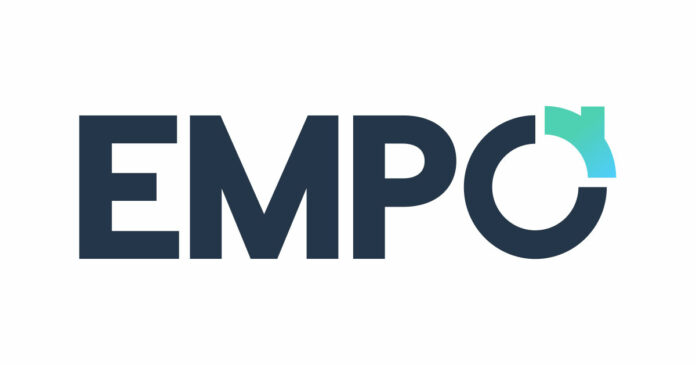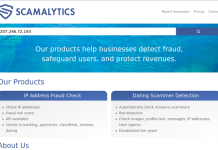
Complete guide about What Is EMPO will be described in this article. Have you ever heard of an enterprise PMO? If you have ever worked in labor management for any domain, you have probably attended of the assignment management office, or PMO.
Enterprise Project Management Office is referred to as EPMO. The strategic division of a firm that defines project objectives and standards, such as project governance, process control, key performance indicators for projects and portfolios, and technology utilisation, is called the EPMO.
Everything You Need To Know About What Is EMPO
In this article, you can know about Everything You Need To Know About What Is EMPO here are the details below;
Experts estimate that a number of project management failure causes account for 70% of efforts failing. A mismatch in project objectives can be blamed for the majority of events.
If you have an enterprise project management office (EPMO) and a project management office, your team members will benefit from improved organisation and project success rates (PMO).
This article defines an EPMO and explains why so many companies utilize it. Do not fear; we will address all of your pressing questions about EPMOs and the potential benefit they may offer to your company.
Describe the EMPO.
Direct reports to the CEO and the board of directors include an enterprise project management office.
It consists of a senior leadership group in charge of important choices on organisational objectives and who should oversee them. Also check security of mobile banking apps
They will also contribute to ensuring that the technical parts of each task are uniform in order to implement productivity.
The typical roles and responsibilities of an enterprise project management office include the following:
Ensuring that project expenses stay within the budget
Contracts pertaining to projects must be fully executed, with all i’s and t’s dotted.
Creating financial and status reports
When comparing projected and actual project progress, keeping note of deliverables, feedback, and deadline modifications
Frequently, they help their project manager.
Are EMPO and PMO Different?
Both EPMOs and PMOs assist firms in managing and coordinating projects with their immediate and long-term objectives.
They offer strategic and tactical direction for the selection, approval, execution, and delivery of projects.
Businesses may achieve their corporate objectives, keep within their budgets, and complete projects effectively and on time by using a project management office.
Businesses have learned about project management during the past ten years and have successfully integrated it as a standard operating procedure.
But as this new company grows, so too must our comprehension of its future.
While EPMO is the way of the future, PMO has benefited many firms.Project management offices and corporate project management offices share one thing despite their differences
While EPMOs have a high-level perspective of the project, PMOs are responsible for day-to-day operations.
Some significant distinctions between EPMOs and PMOs include the following:
Creating Plan: To maximise the impact of any significant team effort, EPMOs frequently work with executives to develop a project strategy that connects each project with quarterly or yearly corporate goals.
Standardize processes: EPMOs create protocols, etiquette, and terminology that all business teams working on projects will adhere to.
They will also standardise rules to make them compatible with corporate objectives.
Governance: EPMOs are in charge of the whole operation of the company, covering everything from project management tools to communication planning.
Do your Company Need EMPO?
- If your business experiences any of the following:
- PMO direction is uncertain
- PMO assets that are not being used
- Even with higher costs, the project’s performance is subpar.
- Conflict with the overall business plan
Simply said, an EPMO is necessary if your firm intends to continue utilising project management or will soon embrace this approach and positions. Also check share calendar apps for your business
By bridging the gap between project and business objectives, which EPMOs perform, PMO effectiveness is evaluated.
EPMOs go above and above to guarantee that effective resource use, goal alignment, and team performance all operate in unison rather than simply validating that a particular activity is within the parameters.
EPMO Framework
It’s essential to carry out thorough research before setting up your EPMO framework.
The successful implementation of an EPMO depends on mapping your organization’s present needs and future objectives.
Along with the aforementioned organisational structure, the EPMO should have distinct business tasks and a distinct EPMO structure.
Making ensuring there are sufficient project managers and team members ready to take on each project and resolve any disputes among team members.
Before approving and deploying a project, EPMOs must identify and evaluate any potential risks and develop a plan of action to manage them.
EPMOs are responsible for ensuring that the organisations they support are successfully managing performance.
The creation and implementation of project governance frameworks throughout their organisations is the responsibility of EPMOs.
In order to ensure that the business achieves its goals and surpasses expectations, EPMOs must establish relationships with stakeholders.
How To Transition To An EPMO
Although changing from a PMO to an EPMO is not always simple, if it is the best course of action for a company, the work will be well worth it.
Projects may be assigned to the appropriate project manager and completed on time, within budget, and within scope with the help of an EPMO that works closely with a project team and interacts with senior management.
Internal transfers are frequently possible without the need for new staff.
Many PMO experts may easily shift into a less active role, while some companies might decide to outsource their EPMO, which can be just as advantageous.
Whether you are building your EMPO internally or externally, collaborate with other leaders to evaluate project managers and other employees to decide whether they can move into a role inside your EPMO.
Those that don’t might have to change jobs and departments to better suit their skills.
EMPO Standardization
Every organisation has its own unique collection of internal policies, practises, influences, and norms that, to varied degrees, shape its PMO or EPMO standards.
In a typical PMO company, consistency may not exist in general; in a PMO, each of the policies, practises, procedures, tools, and cultures may seem wholly unrelated to those of the rest of the company.
The higher-level strategic objectives of an EPMO should be aligned with standardisation in these areas.
By doing so, it is made sure that every effort made advances the organization’s broad mission, vision, goals, and general direction as determined by the management team.
In addition to improving the overall success rate of all organisational functions, this lowers waste and uncertainty.
Benefits of EMPO
- An EPMO combines strategy, execution, and effect measurement.
- They are aggressively attempting to change a number of the now-outdated procedures from the previous PMO department.
- Instead of just working on one project at a time, they offer organizational-wide strategy alignment for all project activities.
- The planning and execution of operations that guarantee the success of all projects are aided by EPMOs.
- They frequently act as the link between departments, delivering adequate communication and support for even the most complex undertakings.
- In contrast to standard PMOs, EPMOs can create priority lists for all proposed assignments and project demand forecasting.
- They can standardise data gathering, reporting, and project management to provide comparable records that executives can utilise to inform their decisions.
Common EMPO Challenges
Having learned what EMPO is, let’s discuss some typical difficulties you could encounter.
1. Relatability
The gauges how simple it is for stakeholders and team members to review project-related data.
PMOs frequently work with teams that are dispersed across the nation or the world.
When dealing with several time zones, numerous email chains, and updating coworkers who have been left out of key conversations, keeping everyone updated can be challenging.
Following important project developments through public project channels can help to cut down on duplicate comments, highlight recurrent tasks, and guarantee that there are more eyes on the task at hand to see issues before they arise.
Time is saved by transparency and enhancing communication. Stakeholders may access their perspective of the project documents and immediately get what they need without any back and forth, saving them from calling or pinging your team for reports.
2. Organizational structure and participation
It could take some time for teams to adjust to a new chain of command.
If they are accustomed to speaking with the COO directly or operate in an environment that encourages separated tasks, the change will be substantial.
An EPMO serves as a point of contact between a team and the C-level executives when they join a team.
The EPMO will handle suggestions and issues on its own, unless a task calls for approval.
3. Misalignment
Making ensuring that every project and business goal are in line is one of an EPMO’s most crucial duties.
But connecting two thoughts is just one aspect of it.
It is also necessary to involve the remaining employees, existing procedures, and tools in the alignment process.
Remember to project an accurate and pertinent ROI for the entire business.
There could be over a dozen active and inactive initiatives affecting business spending and overall productivity at any given time.
An EPMO must evaluate the project procedures already in use and provide a technique for verifying alignment, or provide others with explicit instructions to do so.
EPMO Best Practices
- The ideal EPMO framework combines management and strategy that is outcome-focused.
- Whether you are using EPMO software or employing someone, you must tick each of the following boxes:
- Establish a single point of contact for all project communication, resource management, and planning
- Precisely plan out phases and tasks.
- This is best accomplished by considering individual workloads and making sure that team members have enough time to finish all responsibilities.
- Create plans to reduce or mitigate potential project risks using realistic timeframes, budgets, and visual aids.
- Allow enough leeway in resource allocation so that unanticipated difficulties do not derail the project as a whole.
- Automate vital data collecting, categorization, and analysis so that projects may benefit all company stakeholders in real time.
- Establish a solid communication plan that enables team members to change task statuses, easily obtain approvals, and participate in ongoing dialogues with others.
- To facilitate future planning, create templates from successful ongoing projects, stages, and activities.
- Create a central location to store all project-related information, including marketing brochures, meeting minutes, and onboarding forms.
- Describe the processes and techniques that all personnel can use to boost productivity.
What Software Platforms Should EPMOs implement?
The most crucial tools for EPMOs to implement are those that foster teamwork.
Documents, spreadsheets, and presentations may be quickly shared amongst team members using Microsoft Teams or Google Drive.
By enabling phone and video conferencing, these devices also make distant work easier.
If your business is extensive enough, an EPMO is one of the finest ways to ensure that your projects are in line with the objectives and strategies of your organisation.
They keep top executives informed on what is happening around the company as well as project managers and project teams on track.
Conclusion
The project management foundation helped us get here, but as we learn more about these methods, it seems natural that new and better systems, like EPMO, have emerged. Companies can expand their teams and hire employees from all around the world by understanding what EMPO is.
It is absolutely worth the expense to have an EPMO on your side to organise things properly. Remember that your EPMO project manager is very busy. In order to match projects with goals, oversee project managers, and build new procedures, they will need every kind of assistance.
Your project investments will have a better chance of yielding the desired benefits if your EPMO is successful because it provides the organisational systems, processes, and environments that promote project success from beginning to end.
PMOs are there to support businesses from a project’s inception through completion.













